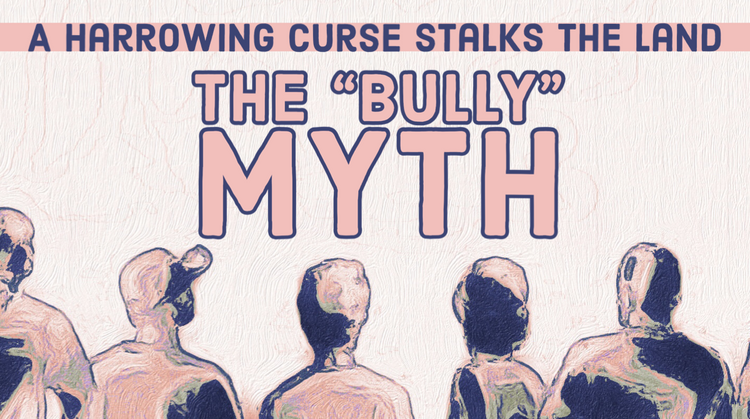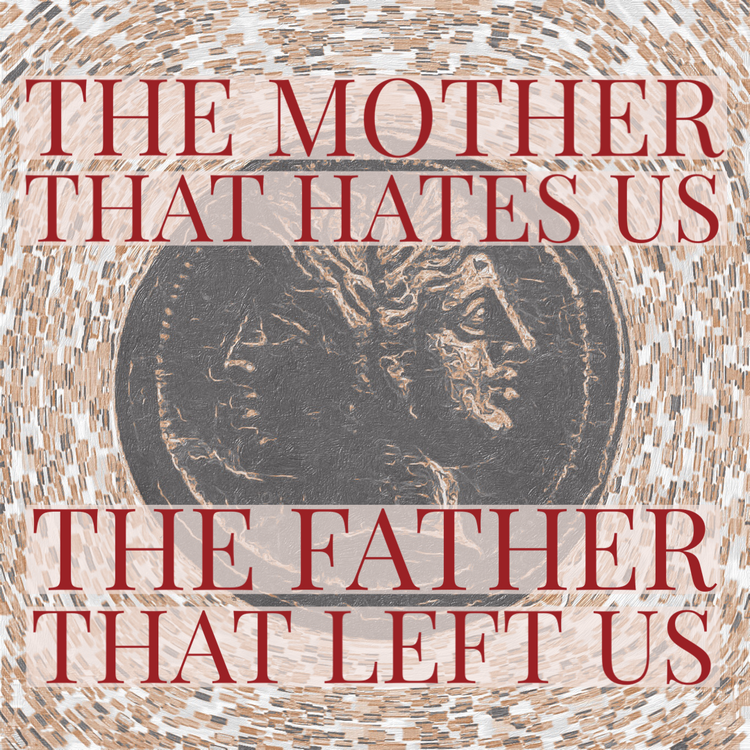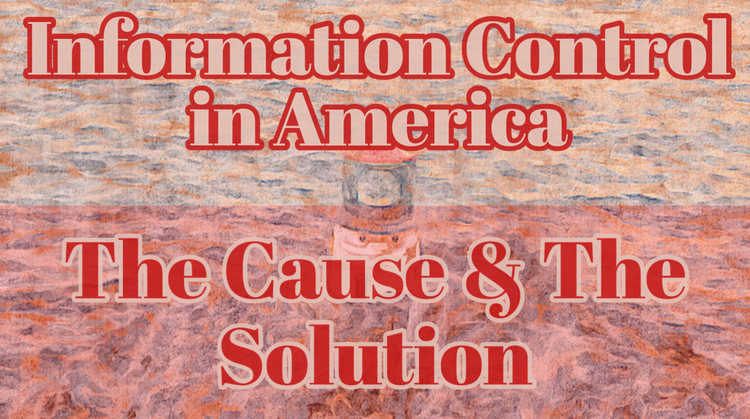Progressive Movements — How Unscientific and Harmful Are They?
Modern progressive movements, such as feminism and Black Lives Matter, are agents of disinformation to their external environment. What the public may not be aware of though, is that these movements are also a source of harm to their internal membership.

Propaganda littered the walls. It could be found in the cafeteria, the Event Centers, entrances to every major building, and other common areas. The rules were simple: Meekly accept the sacred authority of the posters or be ostracized. The posters that I am referring to are not the latest research in atmospheric physics or neural network simulations. No, the posters that I am focusing on stated in large print, 1 out of 5, or a similar ratio referring to how many women at universities were raped or sexually assaulted by the end of their academic careers.
It’s important to explain what function scholarly posters serve at universities. When a research paper is produced, there is often a corresponding poster that is the research paper, but condensed. Having a poster of one’s work in a common area is a convenient way of broadening the audience that will encounter it. But the rape and sexual assault posters are a special case. When a reader copies the link at the bottom of the poster and opens the original article, the reader will find a study where a special definition is used for “rape” and “sexual assault”. The reader has to click on an additional link to the revised definition in most cases. If this subtle trick were not implemented, the ratios cited would be orders of magnitude smaller[0]. The papers that I saved years ago on this topic no longer exist on the original sites, which has become a common theme of the modern left – to delete content no longer of use to them.
The misuse of rape definitions in order to satisfy an agenda is not uncommon, but it is disturbing that academic institutions appear to be negligent, at best, in addressing these misinformation ploys. The gender studies, psychology, and sociology sectors of universities are increasingly more politicized, and they have shown that they are willing to sacrifice the rigor of science and statistics in order to push their propaganda.
What I find particularly interesting from a resilience and trauma perspective, is that the feminism movement required safe spaces, and gender studies focused on trauma narratives. When a location or time is designated to focus on trauma, I think of informal trauma therapies. Specifically, I think of Critical Stress Debriefing, which is a trauma therapy for homogenous groups exposed to trauma. This is very similar to the settings set up by the feminism, LGBTQ, and Trans movements. This will be particularly important in the last section, where I expose the progressive movements for just how unscientific they are – not just in their holistic assumptions, which many have criticized, but their methodology as it applies to their members.
Mobs gather from a centralized authority online[1]. They offer merchandise at a discount and disinformation for free. Their rhetoric is one of spiritual unity and the healing of the broken, yet they’ve attributed to $2 billion worth of damages in a 2 week period[2]. The mob known as Black Lives Matter ostensibly opposes racism against minorities while grossly exaggerating the issue of white supremacy[3].
Speaking of racism against minorities, from the most recent 2019 data collected by the Uniform Crime Reporting Program, 52.5 percent of hate crime offenders were whites[4] despite whites comprising of 62 percent of the population[5], meaning that other groups are disproportionately attributing to hate crimes.
If we consider only crimes against persons, and exclude simple intimidation crimes, that leaves 3200 hate crime offenders in 2019. That means less than one in 100,000 Americans are violent hate crime offenders. Furthermore, compare that with the total number of violent crimes being 1.2 million[6]; even if the hate crime offenders committed 5-10 violent acts each, they are still a fraction of the total violent crimes. I could emphasize that black people are disproportionately more likely to commit hate crimes than whites, but for all communities, hate crimes are insignificant. America, it seems, is not racist.
Any group that chooses to evade real issues (1.2 million violent crimes annually) in order to tackle such an insignificant problem (3200 hate crime offenders), is most likely doing so for political or economic agendas.
So what does the BLM movement really want?
On their page, the group appears to be aligned with the democratic party, by arguments of reduction; they explicitly target republicans. The group wants the world to believe that white supremacy is a legitimate threat, and that black people are victimized. BLM argues that “[t]here are enough laws, resources, and intelligence, but they were not used to stop the coup. Our elected officials must uncover why."[7] Our elected officials is the takeaway. This group is campaigning for chosen leaders, rather than arguing their points to an audience and providing evidence.
The principal BLM goals are radically authoritarian and socialist in nature. They demand that a certain individual be banned from all digital platforms; they do not want the scholarly approach where ideas are pitted against each other. They argue for “racial equity screens” in federal programs. These screens are, by definition, to research impacts that policies have on different ethnicities, yet whenever a conservative proposes the nuclear family as a means to escape poverty, BLM activists stuff their ears.
BLM also argues for more federal investments in housing, education, health, and environmental justice. I wish I could elaborate, but the site leaves it at that, with no further details. I suppose the intellectually weak will see those four key words and phrases, in all of it’s vague logic, and succumb to the propaganda of a group that reduces complex issues down to racism. Recall that in proper statistical analysis, variables must be isolated to deduce causality. I wonder if a BLM activist knows that.
BLM’s Healing in Action reference page[8] comprises of breathing exercise instructions; acupuncture references; the assigning of roles (which includes those that identify as healers); alter building; that liberation, in their practice, is loosely defined; and even specifically mention the holistic approach to problem solving. I will not insult my audience by explaining how unscientific this list is. Furthermore, I don’t know what it means to “free ourselves from the oppression of respectability”. I also didn’t know that ableism, heteropatriarchy, and classicism were issues in the modern west. BLM certainly doesn’t provide evidence for these claims.
In a page tailored to white people, BLM demands include reparations, long-term investments (I suppose federal investments?), and an end to “state-sanctioned violence against black people”. Furthermore, they emphasize the need to get rid of policies that negatively affect black people, but provide no examples of any such policy.[9]
Just like the other progressive movements, BLM focuses on trauma and informal trauma therapies that are strikingly similar to critical stress debriefing and other PTSD treatments. The page[8] relentlessly proselytizes its viewers on trauma, both for individuals and for communities. Multiple toolkits and referals to trauma therapies and treatments are introduced, yet no legitimate psychology research was cited on their pages.
I (and many others) have been easily able to point out the fallacies in these movements. The progressive movements use a highly holistic approach, which enables them to bypass empirical data and statistical methods that go against their narratives, but these are tiring criticisms by now. I will now introduce the psychology of trauma and resilience which I have written about in greater detail in another article[10] where I review 57 psychology and sociology articles, which covered over 50 independent studies.
Resiliency, or resilience, is a measure of healthy responses to adversity. Some are naturally resilient, which psychologists of the '80s and '90s referred to as ego-resilient. Others become resilient through childhood processes or even in adult proccesses.
Resiliency has been documented in schizophrenics[11][12], children of schizophrenic parents[13], socioeconomic disadvantages[14[15][16][17][18][19], parental mental illness[20][21], maltreatment[22][23][24][25], urban poverty and community violence[26][27], chronic illness[28], and catastrophic life events[29].
The most interesting discoveries about resilience and trauma, in my opinion, is (1) the proportions of people that are resilient and (2) what happens to resilient people when they are given treatment.
It was well documented in 1970-2000 that trauma and PTSD treatments were ineffective. The amount of evidence for this will be discussed shortly, but early in that time period, psychologists assumed that treatments had to be modified. As modifications occurred however, there were still large portions of people that remained unaffected. Even more surprisingly, 38% of people regressed from treatments[30]. This fact would seem to be of interest to the swarms of internet users online that take part in mental health discussions, but the general knowledge of resilience appears to be absent from most psychology, sociology, and mental health journals. That is a topic for another time however.
Another example of treatment failures is when a group of repressors (individuals that are less willing to share their traumatic experiences) showed better adjustment than other survivors from a sample of young women with documented histories of sexual abuse[31]. The findings of this study is at odds with mainstream narratives of bereavement, and more research should be conducted.
Something quite startling to me about resilience and trauma is how uncommon PTSD is, even among groups exposed to extreme events. Only 5-10% of people develop chronic PTSD after experiencing trauma in the US[32]. Even taking into consideration the great variability in PTSD rates across types and levels of exposures, the rates are still far less significant than mainstream narratives make them out to be:
- 6.6-9.9% rates for individuals exposed to events during the 1992 Los Angeles riots[33]
- 12.5% rates for Gulf War veterans[34]
- 16.5% rates for hospitalized survivors of vehicle accidents[35]
- 17.8% rates for physical assault victims[36].
Contrast these rates with the rates of mild or no symptoms at all:
- 78.2% exposed to the Los Angeles riots suffered from 3 or fewer PTSD symptoms[37]
- 79% of the motor vehicle accident cases did not meet criteria for PTSD and averaged 3.3 PTSD symptoms[38]
- 62.5% of Gulf War veterans had no psychological distress when examined within 1 year of returning to the US[39]
- 40% of Manhattan residents did not report a single PTSD symptom in a post-9/11 survey[40]
I even encountered studies of children that possessed protective “buffers” such as a caring adult[41][42], which ought to be considered clear evidence for the nuclear family, yet progressive movements seem to abhor the idea.
It is likely obvious to the reader now why I focused on the psychology of trauma and resilience to gain insight into progressive movements. What the progressive movements do with their members is similar to critical incident stress debriefing and other trauma treatments. They take individuals or homogenous groups, emphasize that those members focus on their traumatic experiences, and attempt to address those experiences in a number of ways. The feminist, LGBTQ, and trans movements have their safe spaces, physically and online; BLM has similar resources, and even pages specifically for addressing trauma. Even in conventional online interactions, members of these groups treat each other like traumatized patients receiving treatment.
The progressive movements are largely ignorant of the science of trauma and resilience; otherwise, they would focus more on nuclear families and close bonds, which have clearly shown to act as resilient buffers to those that experience adversity. Not only do the movements neglect this critical point that would help their members, but the movements disparage the notion in various ways.
The progressive movements also do not attempt to address (1) potential malingerers — those that claim victimhood for the cheap social status that it gives them, though this is of little concern. Malingerers will always find another wagon to hop on.
The progressive movements also fail to address (2) the resilient and others that follow natural recovery trajectories, which is clearly the majority of any group that has experienced trauma.
The portion of people that regress from critical incident stress debriefing and similar trauma treatments is ~38%, whereas the portion of people that benefit is ~12%. The progressive movements harm their members more than they help.
I doubt that members in BLM have experienced trauma on par with combat veterans, of which most of them were shown to be resilient. I doubt that members in BLM experience most of the trauma that they claim, because the trajectories that members of these groups claim to follow are the trajectories of chronic PTSD patients, which are a small subset of even extreme groups like post-9/11 Manhattan citizens. I also have encountered no evidence that these movements attempt to distinguish between the resilient and the recovering within their ranks. If these movements care about the issues they ostensibly fight for, they will have to exclude the majority of their membership from most of the movement’s rhetoric, because the resilient and the healthy could be negatively affected by treatment, which includes informal treatment and critical incident stress debriefing, which the progressive movements ignorantly emulate.
The progressive movements are left only with (3) the legitimately traumatized, those that have severe or chronic PTSD. These people have to be treated with care — not used as political pawns. Likely, they would be better served under the care of professionals. They certainly should be focused on recovery rather than attempting to solve the world’s problems — particularly those problems that progressive movements tend to be ignorant of. Yes, it is a precarious position to put oneself in: to claim to be chronically suffering from trauma yet to campaign against unnamed policies, for social restructuring, and other society changes that a chronically ill patient is ought to leave be while recovering.
In conclusion, modern progressive movements serve a few key purposes.
Internally, malingerers have a propaganda platform; a large portion are damaged from informal treatments they ought not to receive; and the minority that have chronic PTSD symptoms are used for political agendas.
These movements are political campaigners. They all have in common false victimhood mentalities, and inequality (real or imagined) is a critical handle for Marxism to take place. So while some progressives are ignorant liberals, others are radical, opportunistic leftists. Whether they are fronts for Marxism or not is debatable, but the victimhood mentality is a direct result of an entitled and narcissistic population that is ignorant of science. I tend to avoid writing on progressive movements, as I believe they are symptoms of deeper problems. I made an exception here because legitimate psychology research is becoming more difficult to find and appears to be suppressed on a large scale, and this article will lead neatly into that topic.
Stay tuned for more corruption updates from The ARKA Journal.
References
[0] National Association of Scholars. "Measuring Sexual Assault on Campus: The Clery Report Challenge." https://www.nas.org/academic-questions/31/3/measuring_sexual_assault_on_campus_the_clery_report_challenge
[1] Black Lives Matter. https://blacklivesmatter.com/
[2] Breitbart. https://www.breitbart.com/politics/2020/09/16/nolte-blm-riots-are-officially-the-most-costly-manmade-damage-to-american-property-in-history/
[3] Black Lives Matter. https://blacklivesmatter.com/blm-demands/
[4] FBI. https://ucr.fbi.gov/hate-crime/2019/topic-pages/offenders
[5] Statistical Atlas. https://statisticalatlas.com/United-States/Race-and-Ethnicity
[6] FBI. https://ucr.fbi.gov/crime-in-the-u.s/2019/crime-in-the-u.s.-2019/topic-pages/violent-crime
[7] Black Lives Matter. https://blacklivesmatter.com/blm-demands/
[8] Black Lives Matter. https://blacklivesmatter.com/wp-content/uploads/2017/10/BLM_HealinginAction-1-1.pdf
[9] Black Lives Matter. https://blacklivesmatter.com/wp-content/uploads/2017/10/Toolkit-WhitePpl-Trayvon.pdf
[10] Kelly C. Offield. (2021). "A Tale of Suppressed Science - The Psychology of Trauma and Resilience." ARKA Journal. https://advocate-for-rights-and-knowledge-of-americans-arka.ghost.io/the-psychology-of-trauma-and-resilience/
[11] Garmezy, 1970
[12] Zigler and Glick, 1986
[13] Garmezy, 1974. Garmez
[14] Garmezy, 1991
[15] Garmezy, 1995
[16] Rutter, 1979
[17] Werner And Smith, 1982
[18] Werner And Smith, 1992
[19] Werner And Smith, 1992
[20] Masten & Coatsworth, 1995
[21] Masten & Coatsworth, 1998
[22] Beeghly & Cicchetti, 1994
[23] Cicchetti & Rogosch, 1997
[24] Cicchetti, Rogosch, Lynch, & Holt, 1993
[25] Moran & Eckenrode, 1992
[26] Luthar, 1999
[27] Richters & Martinez, 1993
[28] Wells & Schwebel, 1987
[29] O’Dougherty-Wright, Masten, Northwood, & Hubbard, 1997
[30] Neimeyer, 2000
[31] Bonanno, Noll, Putnam, O’Neill, & Trickett, 2003.
[32] Ozer, 2003.
[33] Hanson, Kilpatrick, Freedy, & Saunders, 1995.
[34] Sutker, Davis, Uddo, & Ditta, 1995.
[35] Ehlers, Mayou, & Bryant, 1998.
[36] Resnick, Kilpatrick, Dansky, Saunders, & Best, 1993
[37] Hanson et al., 1995.
[38] Bryant, Harvey, Guthrie, & Moulds, 2000.
[39] Sutker et al., 1995.
[40] Galea, Resnick, et al. 2002.
[41]Werner, 1994
[42] Werner, 1995

![A Religion Called "Psychology" & the Bully Myth [Part II]](/content/images/size/w750/2022/10/bully2.PNG)




Member discussion